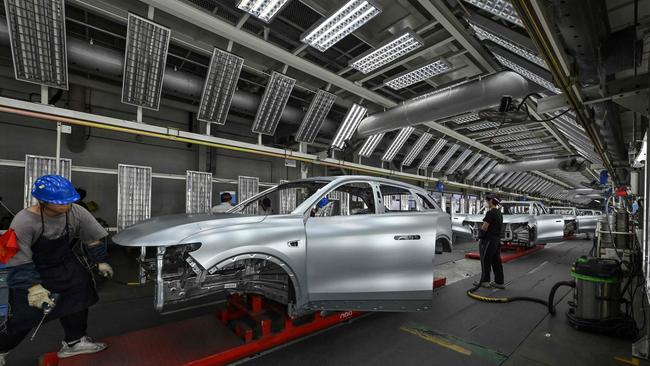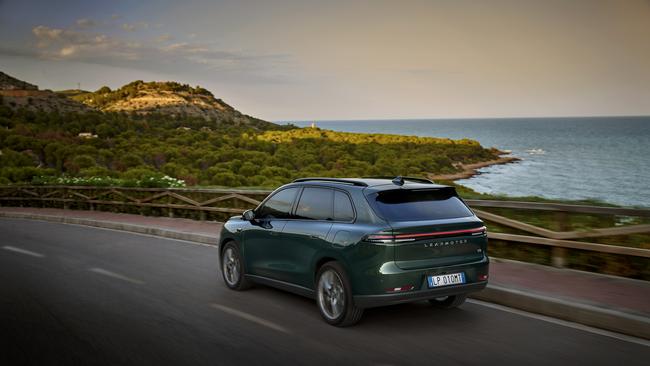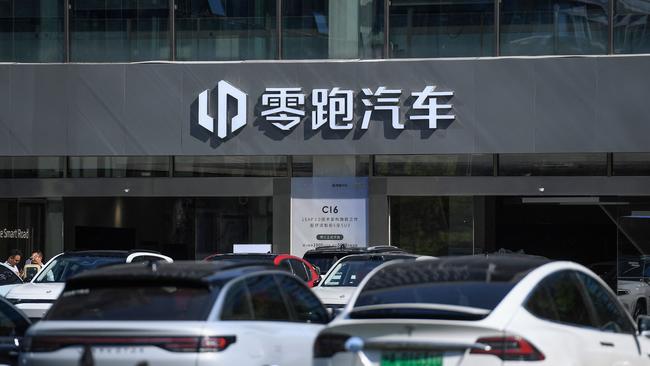New Chinese EV brand has a dark past
Struggling auto distributor Stellantis launches Chinese electric vehicle brand into the Australian market, but its unusual past raises questions.
Motoring
Don't miss out on the headlines from Motoring. Followed categories will be added to My News.
Come November you will notice another brand appearing beside Jeep in some Australian dealerships... Leapmotor. So where have they sprung from?
The short answer is China, but Leapmotor’s origin story and its global growth strategy are both unusual.
Leapmotor was founded nine years ago by Jiangming Zhu, who’s also the company’s chairman and chief executive. He’s no newcomer to big business. Zhu was one of the group that established Zhejiang Dahua Technology in 1993. Dahua, as it’s usually known, made him a very wealthy man. It grew to become one of the biggest video security and surveillance companies in the world.
If that name looks faintly familiar, it’s probably from news reports back in early 2023. That’s when Australian defence minister Richard Marles announced more than 900 video cameras made by Dahua and another Chinese company, Hikvision, were to be removed from 250 government offices over security concerns. The US, UK, Canada and Ukraine have also reportedly sanctioned the use of Dahua tech.

Zhu’s decision to diversify into car making was triggered during a holiday in Spain. He rented a Renault Zoe EV, according to a senior Leapmotor executive, and thought: “I can do a better EV than this!”
Leapmotor was founded by Zhu in 2015, and had its first EV ready for the Chinese market by 2019. The S01, a small coupe, was a sales flop. Its second try was the T03, a tiny city car launched in 2020 that was more successful. A medium-size SUV, the C11, was next, quickly followed by a big sedan, the C01.
The coming C10, which will introduce Leapmotor in Australia, is the brand’s fifth model in five years, and the first designed for the world market.
Later this month, at the Paris motor show, Leapmotor will reveal its next global EV, the B10 small SUV.
Though Leapmotor is very young and not very large - it has produced fewer than 500,000 cars so far - it attracted the attention of a global car industry giant. Stellantis owns 14 brands, including Jeep, Fiat, Peugeot, Alfa Romeo and Ram.

In late 2023 Stellantis invested around A$2.5 billion to buy a 20 per cent stake in Leapmotor. Just months later the companies signed a joint venture agreement to create Leapmotor International. It’s headquartered in the Netherlands and controlled by Stellantis, which has a 51 per cent share.
This deal benefits both partners. It gives Leapmotor access to markets outside China, with Stellantis providing distribution, sales, marketing, service and parts supply support through its existing network. In Australia it’ll be selected Jeep dealerships handling Leapmotor. In other countries it could be a different Stellantis brand.
Stellantis, in turn, gains exclusive access to the rights to distribute, sell and manufacture Leapmotor cars everywhere in the world except China, beginning with Europe. The Middle East, Africa, South America and the Asia Pacific region, including Australia, will quickly follow.

With Europe erecting tariff barriers against Chinese-made EV imports to protect its own EV industry, the manufacturing part of joint venture is an opportunity for Stellantis. It has already begun production of the Leapmotor T03 at one of its factories in Poland.
The Polish-made T03 will sidestep tariffs, meaning it will undercut the price of competitors like the Dacia Spring, a tiny Chinese-made EV that’s been a surprisingly strong seller in Europe.
Tariffs are costly for customers. Though pricing is yet to be finalised for the C10 in Australia, where a 5 per cent duty is charged on imported vehicles, it will be somewhere under $50,000. In Europe the same C10 will cost the equivalent of $60,000, thanks to EU’s tariffs on Chinese-made EVs. They can go as high as 35.3 per cent, on top of an existing import duty of 10 per cent on all Chinese-made vehicles.
While Stellantis’s support of Leapmotor is reassuring, there are reasons to approach with caution. The brand hasn’t had a lot of car-making experience for one. Another is that it has strong links with a huge Chinese security and surveillance company.
Yes, sure, but just look at the price!
Originally published as New Chinese EV brand has a dark past




